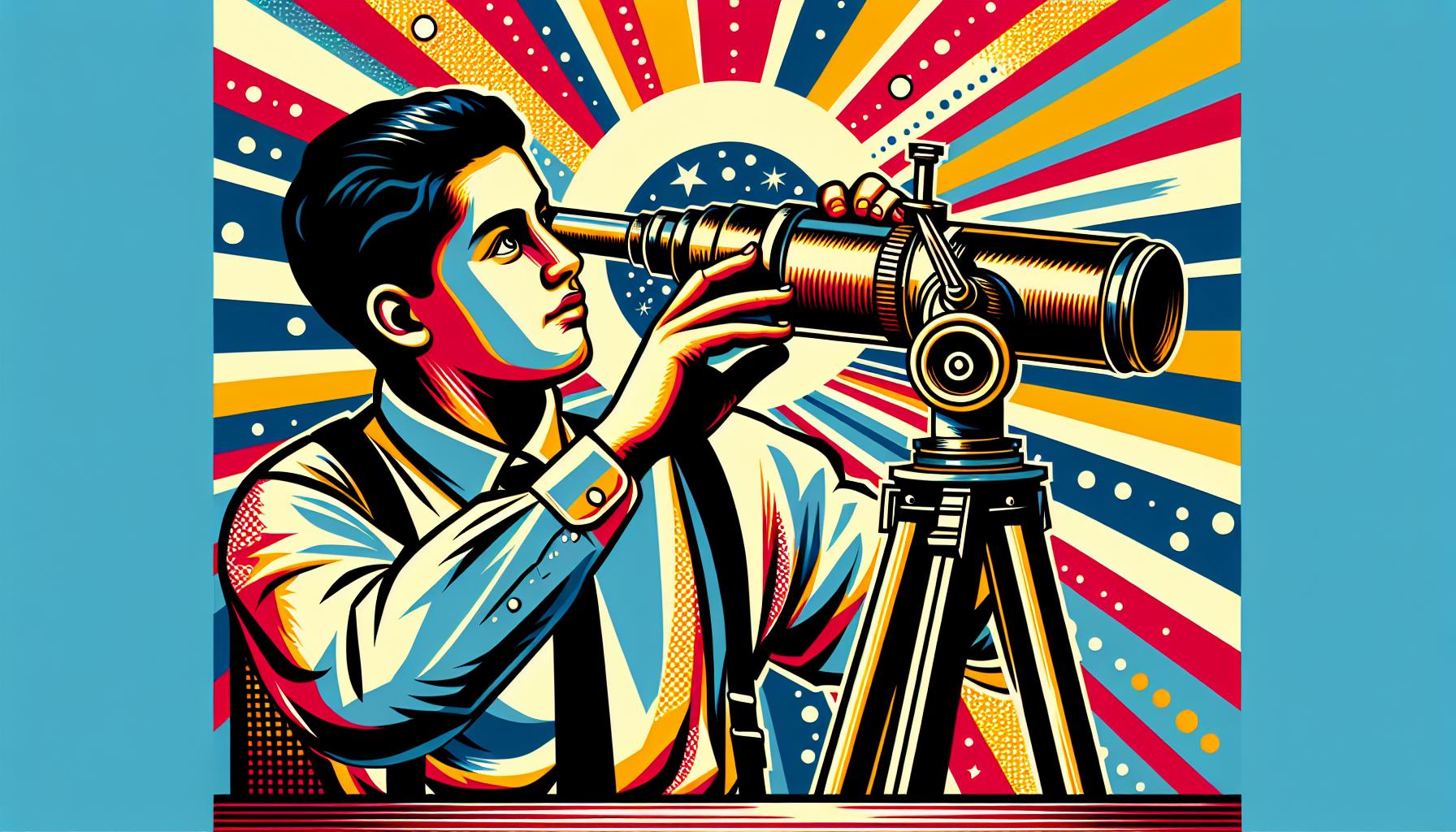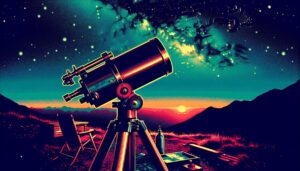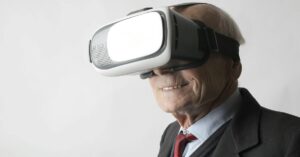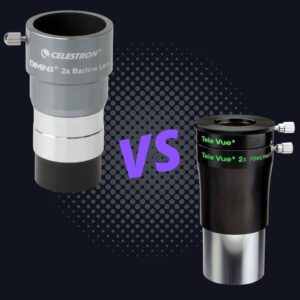This site contains affiliate links to products. I may receive a commission for purchases made through these links.
Ever gazed at the stars and wondered what’s out there? I have, and that’s why I’m gonna show you how to make a telescope for your school project. It’s not only a great way to impress your science teacher, but it’ll also open up a whole new world of celestial exploration right in your backyard.
Don’t worry if you’re not a seasoned DIY enthusiast. I’ll guide you through the process, step by step. You’ll need some basic materials, a bit of patience, and a sprinkle of curiosity. So, are you ready to embark on this exciting journey through the cosmos? Let’s get started!
Making a telescope might seem daunting at first, but trust me, it’s easier than you think. Plus, the sense of achievement when you first peer through your homemade telescope is simply out of this world. So let’s dive right in, and soon you’ll be exploring the universe from your very own backyard.
Gathering Materials
Before anything else, let’s discuss the essential materials needed to build our telescope. Fortunately, you won’t need anything particularly hard to find or expensive. Most items are easily available online or at local stores, and some might already be tucked away in your garage!
For our DIY telescope project, we’ll need:
- Two convex lenses (magnifying glasses work fine)
- Telescoping tubes (cardboard or plastic)
- Some duct tape
- A hobby knife
- Black paint or Dark construction papers (optional)
Your first task, of course, is to find the lenses. These will be the heart and soul of your telescope. One will serve as the eyepiece, while the other will collect and focus lights from distant objects. Try to use a small, powerful lens (with a low focal length) as your eyepiece, and a larger weaker lens (with a higher focal length) for gathering light.
Next, we have the telescoping tubes. These work as the body of your telescope. Cardboard tubes like the ones found in wrapping paper rolls or plastic plumbing pipes serve as inexpensive, easily available options. What’s important is to make sure that one tube is larger so that the smaller one can slide inside of it.
We’ll need some duct tape. It will be used for securing the lenses in place and making our telescope sturdy. And for cutting the tubes to the required length and creating a snug fit for the lenses, you’ll require a sharp hobby knife.
Lastly, using black paint or dark construction papers can give your telescope a professional look. They will help minimize the internal reflections in the telescope tube, improving the image quality.
Here in this project, simplicity is key. If successful, you’re not just making a school project, but a functional telescope. So rather than focusing on aesthetics, concentrate on stretching your DIY capabilities and indeed, your understanding of the cosmos!
Understanding the Basics of Telescope
##Understanding the Basics of a Telescope
Before we delve deeper into the creation process, let’s take a moment to really comprehend the underlying basis of telescope functionality. Understanding the optics is an essential aspect of crafting a high-performance telescope for your school project.
The first element that shapes a telescope’s performance is the objective lens. This is the lens at the furthest end of the telescope, the outlook towards the cosmos. It’s also the bigger of the two lenses. It controls how much light is captured from the objects you’re scrutinizing in the night sky. A larger lens equals more light, boosting clarity and detail. It’s like having a bigger net to catch the incoming light rays.
The second key element is the eyepiece lens. Typically smaller and set at the other end of the telescope where you peer into, the eyepiece lens magnifies the light that’s collected by the objective lens. A higher quality eyepiece, even more, escalates the telescope’s effectiveness, refining the final image you gaze upon.
To combine these elements effectively, we need to tweak the lens distance. Lens distance, or focal length, is the optimized distance between the objective lens and the eyepiece where your eyes absorb the most light, yielding the best possible view.
The fourth crucial aspect is the tube assembly which works as the protective shield of these lenses. It also assists in regulating the light, warding off diffused, unwanted beams.
For a DIY telescope, simplicity is paramount. However, with a basic understanding of the optics involved, you’ll be more equipped to tailor your project to your needs. Aligning and adapting the various aspects of a telescope doesn’t require a degree in Astrophysics, but a proper foundation will go a long way towards ensuring your project’s success.
Lastly, while the aesthetics of your telescope may not be as crucial as its functionality, don’t ignore them completely. A neat, clean build can also impress your teachers and peers, while making the task feel more rewarding for you. Think of it as an opportunity not just to learn but to showcase your skills and creativity as well.
Designing Your Telescope
Once you’ve got a basic understanding of telescope operation, it’s time to put pen to paper and design your telescope.
Remember, the key to a successful design revolves around correctly aligning the objective lens with the eyepiece lens. This crucial setup will help you capture the best possible images of celestial bodies.
Don’t limit your creativity – let it flow freely. Design sketches are an excellent way to communicate your ideas. Ensure they’re complete with features like the tube assembly, which should be large enough to fit the lenses, and the mount for stability.
Let’s dive into the specifics:
Mount and Tube Assembly
Choosing the right mount is as important as choosing and correctly placing the lenses. Two types of mounts are commonly used in telescopes:
- Equatorial mounts, suitable for those who wish to study celestial bodies.
- Altazimuth mounts suitable for beginners, simpler and less costly.
Opt for one that’s sturdy and can be adjusted with ease. For the tube, a simple cardboard or PVC pipe can do the trick.
Optimum Lens Distance
The focal length of the objective lens and eyepiece lens determines the spacing between them. Below is a simple table to determine lens spacing:
| Objective Lens Focal Length (f1) | Eyepiece Lens Focal Length (f2) | Lens Spacing (f1 + f2) |
|---|---|---|
| 700 mm | 20 mm | 720 mm |
| 1000 mm | 25 mm | 1025 mm |
Note: The measurements are in millimeters.
Telescope Body
This one’s all about the aesthetics. While the look of your telescope doesn’t impact its functionality, a sleek build can impress your peers and teachers. Choose materials that are both robust and lightweight, like plastic or lightweight metal.
Also, consider making your model collapsible, it’s an excellent addition that showcases your engineering craft.
Assembling the Telescope
Building a telescope, you know, can be as complex or as simple as you want. But in this school project context, we’ll mainly concentrate on a manageable format that clearly demonstrates comprehension.
When assembling the telescope, the heart of the operation is ensuring the precise alignment of the objective lens with the eyepiece. This alignment is crucial for obtaining the finest possible images of celestial objects. Also, one should not forget the importance of having a stable and sturdy mount. Dependable mounts like altazimuth or equatorial are regularly featured in telescopes.
Additionally, use of a well-built mount supports the accurate tracking of celestial bodies. Also, consider the benefit of a collapsible model. An organized, condensed structure not only saves space but also exhibits an elevated level of skill in engineering.
One more important component is having correct lens spacing. An optimized space between lenses guarantees better-quality imagery with reduced fringe effects and aberrations. To help you determine this spacing, I’ve included a convenient markdown table below:
| Lens Type | Recommended Spacing |
|---|---|
| Objective Lens | 20 inches |
| Eyepiece Lens | 2 inches |
Lastly, adoption of robust and lightweight materials for your telescope’s body morphology is paramount. Different options are available ranging from aluminium, steel, to even high-grade plastics. Each has its unique set of properties and advantages. Choose accordingly!
Testing and Adjusting Your Telescope
Once you’ve gone through the painstaking process of assembly, it’s crucial not to skip the step of testing and adjusting your telescope. Getting this step right ensures those long hours dedicated to your project pay off by capturing stunning images of the cosmos.
Here’s the way to proceed.
Point at a Distant Object During Daylight
Start your testing during daylight hours. Aim your telescope at a terrestrial target at least a mile away. Avoid pointing the telescope towards the sun, as it can damage your eyes or the telescope. This preliminary test helps you ensure all parts are aligned correctly.
Fine-Tune the Alignment
If the image isn’t clear or the object isn’t centered, it’s time to make some fine adjustments. Slightly tune the alignment of your eyepiece and objective lenses. Remember, patience is vital – small adjustments can make a massive difference in a telescope.
Test the Mount’s Movement
See how smoothly your mount rotates. Whether it’s an altazimuth or equatorial mount, it should offer a fluid, controlled movement. If there’s any jerkiness or resistance, loosen or tighten adjacent parts as needed – remember, it’s all about balance.
Align the Finder Scope
Your finder scope serves as your guide to the stars. It must align with the main telescope. To ensure they match, use the same distant object you used for the initial test. The object should be at the center of both the finder scope and the eyepiece view.
Use Collimating Equipment if Necessary
Not always mandatory, but collimating equipment like a laser collimator or Cheshire can be quite handy if you’re struggling with alignment issues. These help precisely align the optical elements.
And there you have it. Put some time and effort into this crucial step, and you’ll find your school project delivering high-quality images of distant celestial bodies. Before finishing, let’s delve into maintaining and storing your telescope properly which will be discussed in the following section.
Conclusion
So, we’ve walked through the process of creating a telescope for a school project. We’ve learned that the testing and adjusting phase is crucial to achieving impressive views of the night sky. It’s not just about assembly, but fine-tuning the alignment, checking the mount movement, and aligning the finder scope. We’ve also touched on the use of collimating equipment when needed. The effort you put into this stage will pay off with high-quality images that are sure to amaze you.
Now that you’ve built your telescope, it’s time to explore the cosmos. But remember, the journey doesn’t stop here. Up next, we’ll delve into how to maintain and store your telescope to ensure it stands the test of time. Keep reaching for the stars!
Frequently Asked Questions
Why is testing and adjusting a telescope important?
After assembly, testing and adjusting your telescope is crucial to capture high-quality images of celestial bodies. If not properly aligned, the telescope may not give the desired results irrespective of its quality.
What is a finder scope and why do I need to align it?
A finder scope is a smaller sighting device on a telescope, used to help locate celestial objects. For precise viewing, it is essential that the finder scope and the telescope’s main lens are perfectly aligned.
What is collimating equipment?
Collimating equipment helps adjust optical alignment of your telescope. If your views are blurry or not sharp, despite correct focus, your telescope might need collimation.
What benefits can I expect from proper alignment of my telescope?
Putting effort into testing and adjusting your telescope will likely result in high-quality images of celestial bodies. It improves the effectiveness of the telescope and usability of the images captured.
You may also like:




